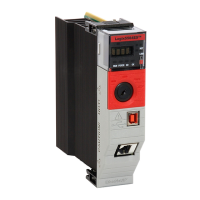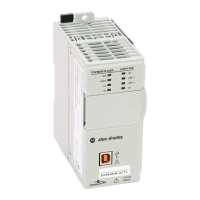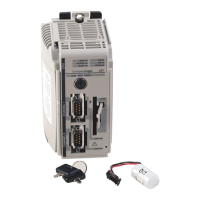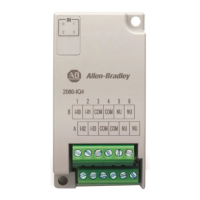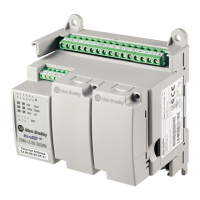CIP Over the Controller Serial Port
Rockwell Automation Publication 1756-PM020F-EN-P - January 2019 77
Name Type Description of Request Parameter Semantics of Values
CMD USINT Command = 0x0A See the DF1 Protocol and Command Set Reference
Manual, publication 1770-6.5.16.
STS(1) USINT Status (0 in request)
TNSW UINT Transaction sequence number
FNC USINT Fragmentation protocol function See Fragmentation Protocol
Extra USINT Additional information for fragmentation protocol
CID(2) UINT Connection ID Determined in the Forward_Open request or reply. One
unique ID for requests and another for replies. Refer to the
CIP Specification.
Trans. Header ** UINT Transport class 3 Sequence Count Increments with each new data request, echoed in
response. Refer to the CIP Specification.
Data - CIP Explicit Message
See CIP services.
Establish the CIP explicit message connection before using the 0A command.
This is accomplished by sending the 0B command to the controller with the
CIP Forward_Open service request. The successful Forward_Open response
provides the information for the fields shown later. The Forward_Open
service is described in the CIP Specification and in the CIP tutorial.
The 0A command only supports Transport Class 3 connections to the
Message Router object. No other transport classes are supported. The
contents of the data field are CIP services that follow the CIP Service
Request/Response Format.
Like all CIP connections, an RPI value associated with the connection
establishes the rate at which messages must be sent. If they are not sent at
this rate, timeouts occur. Rest the RPI timer should be reset when a message
is sent. When the timer reaches the RPI value, the re-transmit the connection
to the last sent message and keep the same sequence count. The target does
not reprocess the message after it detects the same sequence count. The target
resends the same response previously sent. The connection timeout has a
short duration, and the recovery time from a noise or a temporary disconnect
also has a short duration. It is recommended to scale the timeout for noise
recovery to 20 seconds and then set the RPI rate productions to avoid
allowing connections to time out repeatedly.
The PCCC status (STS) in the PCCC response indicates the success or failure
of the PCCC system to deliver the data across the PCCC link. It does not
indicate the success or failure of the CIP service in the reply. The status for
that presents in the CIP service response, within the data field. See the CIP
services for details.
Connections are usually kept open for very long periods of time. However, it
may be necessary for the client to close the connection from time to time. In
that case, the client application must close the connection using the 0B
command with a CIP Forward_Close service request in it. It is not acceptable
to allow connections to timeout naturally and clean themselves up.
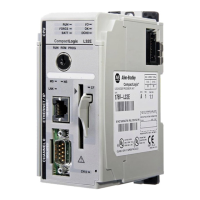
